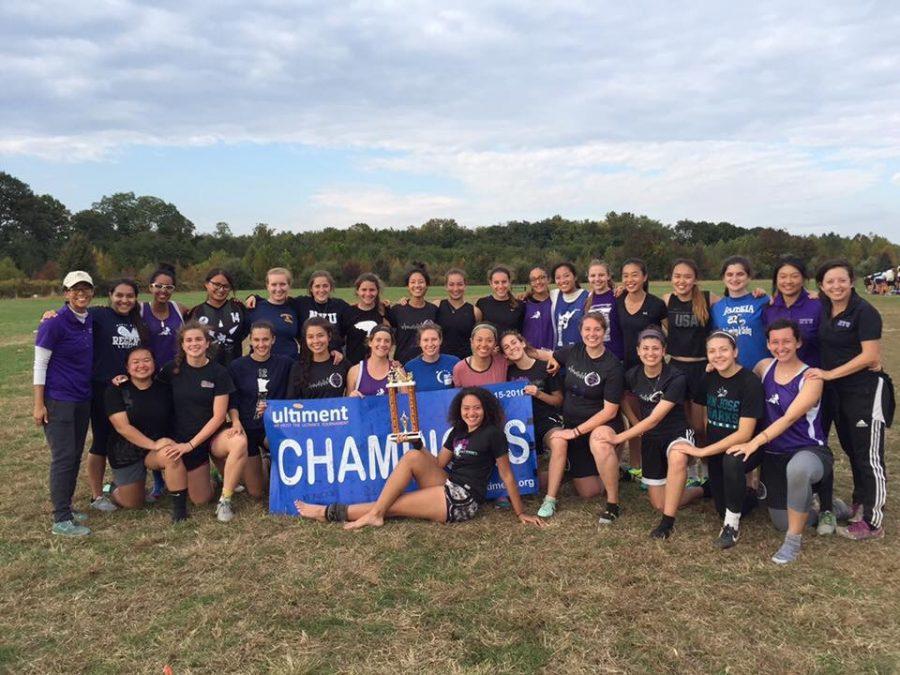The Ultimate Guide to Frisbee
NYU’s 2016 women’s ultimate frisbee team. Ultimate frisbee is an often overlooked, complex and strategic sport enjoyed by a number of students at NYU.
April 10, 2017
On a sweltering, humid day on Randall’s Island in early September I stared at the slender white disc in my hands and thought to myself, “I wish I was playing soccer.”
Soccer had always comprised a majority of my identity, ever since my early ball-hogging days in the first grade. But unluckily for me — or perhaps luckily — NYU has no club team. So as I perused Kimmel as a naive freshman Club Fest participant, I eagerly signed up for anything I thought might fill the gap soccer had left.
When I stopped at the NYU women’s Ultimate table my knowledge of Ultimate was anything but informed. I had always associated frisbee with Quidditch and the perfectly groomed campus quad — a sort of college pseudo-sport. But I soon discovered that frisbee is entirely its own entity, and very much a sport.
As I delved into Ultimate, and the sweltering heat turned into frigid wind, I began to notice the complexity of the sport — all while being extremely aware that I was terrible at it.
The concept of Ultimate seems like a simple premise — a football-style game with two end zones, the objective being to move the frisbee to the respective end zone without running it.
However, even considering the hundreds of strategic formations, defensive rules and foreign terminology, the simple aspect of throwing the frisbee proved the most difficult for me.
Why on earth was throwing a frisbee so challenging? It was and still is incredibly frustrating. For the first two months of my Ultimate experience, every flick I threw fell to the ground with a disappointing flop, yards away from my target’s outstretched hands.
Despite my frustration, I slowly began seeing the appeal of the sport: a concept that is dubbed the “Spirit of the Game,” which according to the Official Rules of Ultimate: 11th Edition, highlights the importance of mutual respect, fairness and competitiveness.
This may seem like a cliché concept, or one that is inherently part of participating in sports. Yet I have never experienced a more open and friendly game environment that still maintains such a strong level of competition.
The purest example of this phenomenon is the discussion between players surrounding a call. There are no referees or supervisors in Ultimate, which shocked to my soccer-centered self. Players instead rely on discussion and rationale to determine a call.
I was at first rather cynical regarding this approach. Many of my experiences with other teams on the soccer field had been friendly but often descended into a series of pushes, trips and badmouthing.
But after almost a full school year playing Ultimate, I have not experienced this sort of behavior. In fact, I have often left the field with a sense of camaraderie, not just among the Violet Femmes, but also with the opposing side.
This spirit of support and kindness fosters a deep sense of community within Ultimate, and in all my years of athletic involvement, I’ve never felt so uplifted and supported by a team — one that has stood by my horrid throws and constant rookie confusion.
A version of this article appeared in the Monday, April 10 print edition. Email Nika Woodfill at [email protected].



























































































































































